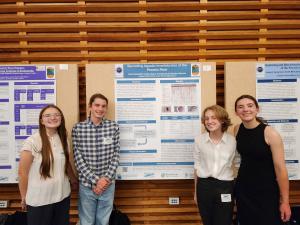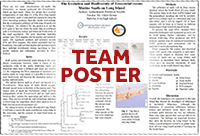

- Program:
- Barcode Long Island
- Year:
- 2024-25
- Research Topic:
- Biodiversity & trade
- Taxonomic Group Studied:
- Animals: Invertebrate
Project:
Barcoding Organisms in the Peconic River
- Students:
- Remi Bellofatto, Ashlyn Burst, Timothy Dodd, Madyn Warsaw
- School:
- Eastport South Manor Junior-Senior High School, Suffolk
- Mentors:
- Robert Bolen
Abstract:
We will collect and barcode about 20 morphologically unique specimens from the Peconic Bay Estuary using the CO1 gene. The CO1 gene is used for DNA barcoding because it is found in the mitochondria of most living organisms. DNA Barcoding is 99.2% accurate when using the CO1 gene to identify most animal groups. We aim to assess the biodiversity of invertebrates in the Peconic Estuary using DNA barcoding to identify them. Biodiversity is the total amount of different types of life in an area and is important to keep ecosystems resilient to disturbances. Some invertebrates in the northeast American estuaries that we expect to find in the Peconic River Estuary if it is a healthy ecosystem are many species of dragonfly larvae, leeches, amphipods, and snails. On the other hand, if we find invasive species like zebra mussels or Asian clams in the Peconic River Estuary, it may indicate an unhealthy ecosystem. Some major problems in the Peconic Estuary are nutrient pollution, brown tide, toxic

